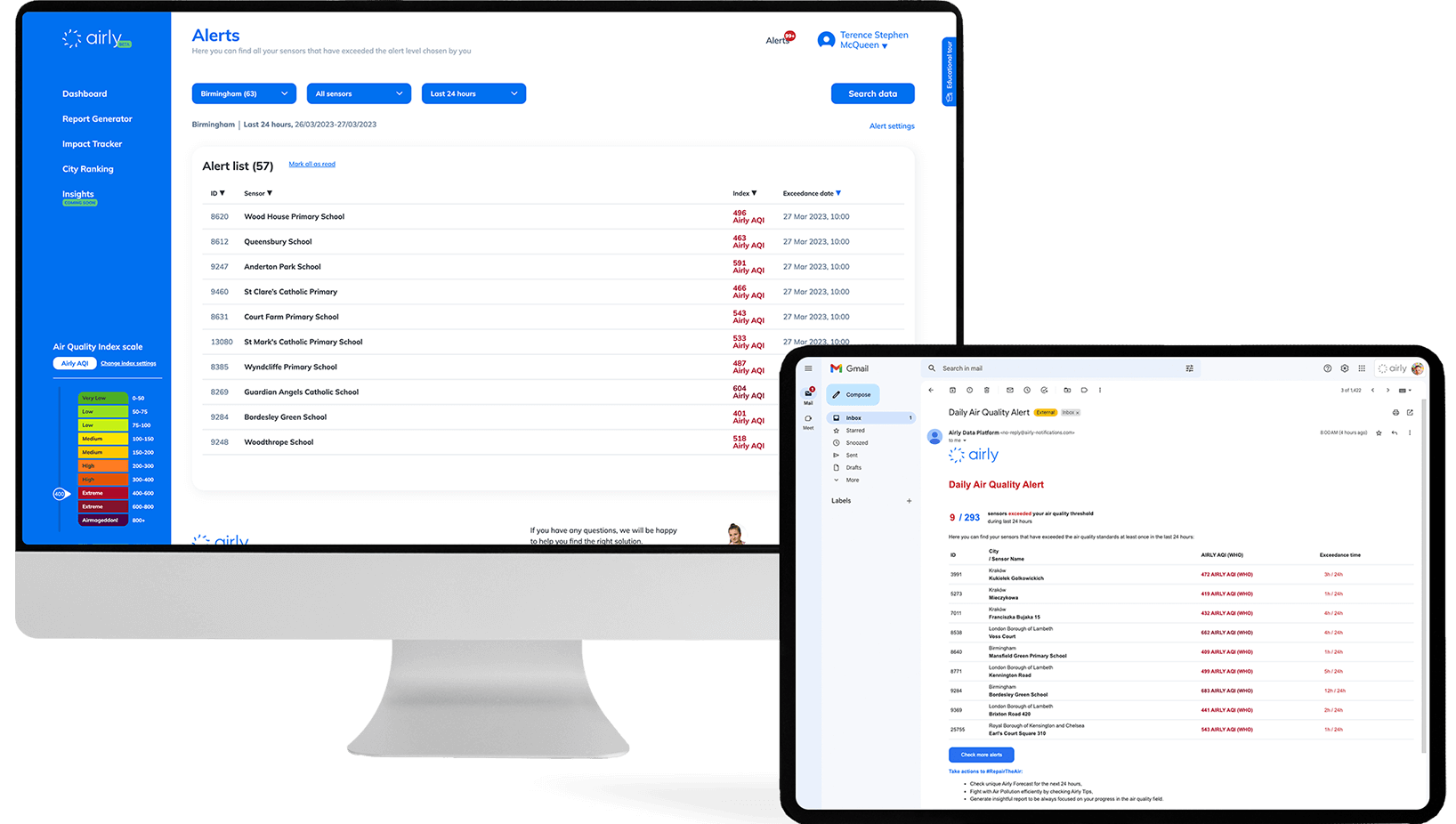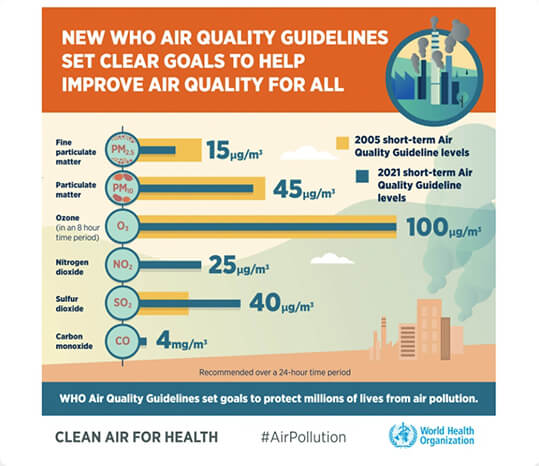Air Pollution
Allerts
Get a demoAllerts

Alerts allow a customer to take actions in real-time. Thanks to them, a customer is automatically informed when air quality limits are exceeded.
The most powerful features:
- search alerts in a city, search alerts by a sensor or sensors in a city,
- the system allows a user to manage alerts and sends them based on user personal preferences
- search alerts for a city, for a sensor or sensors in time: last 24h and last 30 days,
- set an alert level according to air quality index established in Data Settings,
- the system sends alert to a customer day by day (Daily alerts),
- the system displays and sends the alerts by default - every customer has switch on and switch off the alerts on demand.


The CAQI - European Index
A more straightforward presentation of air quality data in European cities is accomplished using various indexes, each converting their measurements into one easily understood number. Our monitoring system uses the hourly index, which describes the current air quality based on the average of all measurements from the last hour. The platform updates its data every 3 minutes, so the measures shown are the rolling average of the previous full hour. The air quality index used in Europe, CAQI, has five ranges, with the values presented on a scale from 0 (very low) to >100 (very high). It is a relative measure of the amount of air pollution.
The AQI – Air Quality Index
The AQI Index was developed in the US to communicate levels of air pollution. It is divided into six categories and is a number on a scale from 0 to 500. In general, levels below 50 represent good air quality, while those above 300 are dangerous. More components constitute the AQI than the CAQI, five to be specific: PM, O₃, CO, SO₂, and NO₂. The index is calculated using measured concentrations and established breakpoints of pollutants, with the highest value applied. The most dominant value is reported in locations where multiple pollutants are measured. The Environmental Protection Agency (EPA) shares the AQI with the public via its dedicated website, AirNow.


The new WHO Global Air Quality Guidelines
The World Health Organisation (WHO) introduced new Global Air Quality Guidelines (AQGs) on September 22, 2021. The new version of AQGs was developed on the already available threshold limits that have been in place since 2005. The updated values provide clear evidence that poor air quality damages human health at even lower concentrations than were assumed previously.
